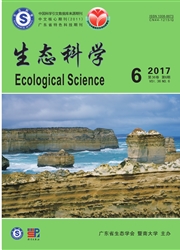

 中文摘要:
中文摘要:
为表面水,沉积,和鱼肌肉里的抗菌素,包括的磺胺, fluoroquinolones, macrolides,四圜素,和 trimethoprim 的不同的班的同时的决心的精确、敏感的方法被开发。在水样品,药被递给 1000 水的 mL 通过与稳固阶段的抽取(SPE ) 提取吸水脂性平衡(HLB ) SPE 子弹。沉积样品是提取溶剂的,由双人脚踏车 SPE (强壮的阴离子交换(萨克斯风管)+ HLB ) 列在后面大扫除。鱼肌肉被 acetonitrile 和柠檬性的缓冲区的混合物提取(80:20, v/v ) 答案,并且由 SPE 清洗了。有监视的多重反应(MRM ) 的液体层析双人脚踏车团 spectrometry (LC-MS/MS ) 察觉被采用确定所有混合物。为刺的水,沉积,和鱼样品里的抗菌素的恢复分别地是 60.2%95.8% , 48.1%105.3% ,和 59.8%103.4% 。方法被用于从达恩奇·莱克,拿的样品中国。它证明检测抗菌素的集中从 quantification (LOQ ) 的限制到 713.6 ng 獵瀭畬 ????? 猯'T  ̄慮潮吗??
 英文摘要:
英文摘要:
Precise and sensitive methods for the simultaneous determination of different classes of antibiotics, including sulphonamides, fluoroquinolones, macrolides, tetracyclines, and trimethoprim in surface water, sediments, and fish muscles were developed. In water samples, drugs were extracted with solid-phase extraction (SPE) by passing 1000 mL of water through hydrophilic lipophilic balanced (HLB) SPE cartridges. Sediment samples were solvent-extracted, followed by tandem SPE (strong anion exchange (SAX) + HLB) clean-ups. Fish muscles were extracted by a mixture of acetonitrile and citric buffer (80:20, v/v) solution, and cleaned by SPE. Liquid chromatography-tandem mass spectrometry (LC-MS/ MS) with multiple reaction monitoring (MRM) detection was employed to quantify all compounds. The recoveries for the antibiotics in the spiked water, sediment, and fish samples were 60.2%-95.8%, 48.1%-105.3%, and 59.8%- 103.4%, respectively. The methods were applied to samples taken from Dianchi Lake, China. It showed that concentrations of the detected antibiotics ranged from limits of quantification (LOQ) to 713.6 ng- L1 (ofloxacin) in surface water and from less than LOQ to 344.8 μg·kg-1 (sulphamethoxazole) in sediments. The number of detected antibiotics and the overall antibiotic concentrations were higher in the urban area than the rural area, indicating the probable role of livestock and human activities as important sources of antibiotic contamination. In fish muscles, the concentration of norfioxacin was the highest (up to 38.5 μg·kg-1), but tetracyclines and macrolides were relatively low. Results showed that the methods were rapid and sensitive, and capable of determining several classes of antibiotics from each of the water, sediment, and fish matrices in a single run.
 同期刊论文项目
同期刊论文项目
 同项目期刊论文
同项目期刊论文
 Polybrominated diphenyl ethers (PBDEs) and polychlorinated biphenyls (PCBs) in sediments of Liaohe R
Polybrominated diphenyl ethers (PBDEs) and polychlorinated biphenyls (PCBs) in sediments of Liaohe R Distribution and ecological risk of antibiotics in a typical effluent–receiving river (Wangyang Rive
Distribution and ecological risk of antibiotics in a typical effluent–receiving river (Wangyang Rive Occurrence, distribution, environmental risk assessment and source apportionment of polycyclic aroma
Occurrence, distribution, environmental risk assessment and source apportionment of polycyclic aroma Occurrence of antibiotics and antibiotic resistance genes in a sewage treatment plant and its efflue
Occurrence of antibiotics and antibiotic resistance genes in a sewage treatment plant and its efflue Distribution, sources and composition of antibiotics in sediment, overlying water and pore water fro
Distribution, sources and composition of antibiotics in sediment, overlying water and pore water fro Photodegradation of sulfapyridine under simulated sunlight irradiation: Kinetics, mechanism and toxi
Photodegradation of sulfapyridine under simulated sunlight irradiation: Kinetics, mechanism and toxi Spatial and temporal distribution of polycyclic aromatic hydrocarbons (PAHs) in surface water from L
Spatial and temporal distribution of polycyclic aromatic hydrocarbons (PAHs) in surface water from L Spatial distribution and toxicity assessment of heavy metals in sediments of Liaohe River, northeast
Spatial distribution and toxicity assessment of heavy metals in sediments of Liaohe River, northeast 期刊信息
期刊信息
